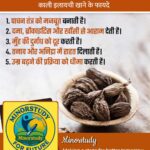🌿 Introduction: Fungal Infections—A Common but Conquerable Issue
Fungal infections can impact nearly any part of the body—from athlete’s foot and ringworm to yeast infections and nail fungus. They’re often itchy, stubborn, and frustrating, affecting comfort, appearance, and confidence. While medical antifungals are effective, many prefer natural, gentle, and side-effect-free home remedies.
- 🌿 Introduction: Fungal Infections—A Common but Conquerable Issue
- 📜 Historical Origins: Ancient Wisdom That Heals
- 🗓 Timeline: Traditional Remedies Becoming Modern Solutions
- 💡 Facts About Fungal Infections & Natural Remedies
- 🧠 9 Powerful Remedies to Conquer Fungal Infections
- 1. 🌿 Tea Tree Oil – The Natural Antifungal Powerhouse
- 2. 🧂 Neem (Indian Lilac) Paste or Oil
- 3. 🧴 Coconut Oil – Soothing & Healing
- 4. 🧂 Apple Cider Vinegar (ACV) Soak or Rinse
- 5. 🫚 Garlic – The Immune-Boosting Wonder
- 6. 🟧 Turmeric Paste or Oil
- 7. 🍯 Raw Honey or Manuka Honey
- 8. 🫛 Aloe Vera Gel
- 9. 🌀 Yogurt or Probiotic Application
- 🧠 When to See a Doctor
- ❓ FAQs: Quick Answers to Common Questions
- 🌟 Significance in Daily Life & Society
- 🌱 Observance, Rituals & Cultural Traditions
- 👜 Key Takeaways
- 🎉 Wishing You Healthy, Confident Skin!
- ✅ Conclusion: Natural Defense, Real Results
This article dives into 9 powerful home remedies, the history and facts behind them, a timeline of usage, common FAQs, their daily-life significance, and why embracing them positively impacts health and society.
📜 Historical Origins: Ancient Wisdom That Heals
Natural antifungal treatments date back thousands of years:
Ayurveda (India): Touted herbs like neem, turmeric, and triphala as effective against “Dadru” (fungal infections).
Traditional Chinese Medicine (TCM): Used herbs such as huáng qín (skullcap) and huáng bǎi (phellodendron) to treat skin fungal invasions.
Ancient Egypt and Greece: Employed honey, olive oil, and vinegar poultices to combat infections and speed healing.
Indigenous cultures worldwide: Relied on local plants like tea tree, garlic, and calendula for their antimicrobial properties.
These traditional remedies harnessed powerful natural compounds long before laboratory antifungals existed.
🗓 Timeline: Traditional Remedies Becoming Modern Solutions
| Time Period | Key Developments |
|---|---|
| ~1500 BCE | Egyptians documented using honey-based poultices |
| ~1000 BCE | Ayurveda prescribes neem, turmeric, and triphala |
| ~500 BCE | Greek and Roman healers use vinegar and olive oil |
| Medieval Era | Herbal stews and garlic infusions gain popularity |
| 19th Century | Tea tree oil isolated in Australia |
| 20th Century | Turmeric’s curcumin and tea tree oil gain scientific validation |
| 21st Century | Natural botanicals integrated into antifungal products |
💡 Facts About Fungal Infections & Natural Remedies
Fungal infections are not contagious unless skin or nail contact is direct.
Conditions like moisture, poor hygiene, tight clothing, or low immunity increase risk.
Many antifungal plants contain terpenes, phenols, and curcuminoids—compounds with proven antifungal, anti-inflammatory, and antioxidant effects.
🧠 9 Powerful Remedies to Conquer Fungal Infections
1. 🌿 Tea Tree Oil – The Natural Antifungal Powerhouse
Why it works: Contains terpinen-4-ol, which disrupts fungal cell membranes.
How to use:
Dilute 2–3 drops in 1 tsp coconut or olive oil.
Apply twice daily to the infected area.
Use for athlete’s foot, ringworm, and nail fungus.
2. 🧂 Neem (Indian Lilac) Paste or Oil
Why it works: Packed with azadirachtin and nimbidin—potent antifungal and anti-inflammatory agents.
How to use:
Apply neem leaf paste to the area.
Or use neem oil mixed with carrier oil overnight.
Beneficial for skin infections and scalp dandruff.
3. 🧴 Coconut Oil – Soothing & Healing
Why it works: Contains lauric and caprylic acids that target fungal cell walls.
How to use:
Apply virgin coconut oil to the affected area twice daily.
Great for yeast infections, jock itch, and mild skin fungi.
4. 🧂 Apple Cider Vinegar (ACV) Soak or Rinse
Why it works: Creates an acidic environment unfavorable to fungal overgrowth.
How to use:
Dilute 1 part ACV in 2 parts water.
Soak feet or skin for 15–20 minutes daily.
Use at bedtime for athlete’s foot or jock itch.
5. 🫚 Garlic – The Immune-Boosting Wonder
Why it works: Allicin has strong antifungal properties.
How to use:
Crush a garlic clove, mix with carrier oil, apply 30 minutes daily.
Alternatively, add raw garlic to your diet for immunity support.
6. 🟧 Turmeric Paste or Oil
Why it works: Curcumin reduces inflammation and inhibits fungal growth.
How to use:
Combine 1 tsp turmeric with water or oil.
Apply to the infected area daily.
Cover lightly—rinse-off after 20–30 mins.
7. 🍯 Raw Honey or Manuka Honey
Why it works: Naturally antiseptic with high sugar content that kills fungi.
How to use:
Apply as a thin layer over the infection.
Cover with breathable dressing overnight.
8. 🫛 Aloe Vera Gel
Why it works: Aloe vera soothes irritation and fights fungal overgrowth.
How to use:
Use pure gel directly onto affected skin 2–3 times daily.
Ideal for mild infections and scalp relief.
9. 🌀 Yogurt or Probiotic Application
Why it works: Live cultures help restore healthy skin and vaginal flora balance.
How to use:
Apply plain unsweetened yogurt topically (vaginal infections)
Or add yogurt to your diet for gut immunity support.
🧠 When to See a Doctor
These remedies work well for mild to moderate fungal issues, but you should consult a healthcare provider if:
Symptoms persist beyond 2 weeks.
Infection spreads, worsens, or becomes painful.
You have weakened immunity or diabetes.
There are signs of secondary bacterial infection or systemic illness.
❓ FAQs: Quick Answers to Common Questions
Q1. Can I combine multiple remedies?
Yes—with care. For example, tea tree and neem oil together may enhance effectiveness. Always patch-test first.
Q2. How quickly will I see results?
Expect relief within 7–14 days for mild infections. More stubborn cases may take 4–6 weeks.
Q3. Are these safe during pregnancy?
Most are safe in moderation, but consult your doctor for specific advice.
Q4. Can I replace prescribed medicine with home remedies?
For minor infections, these might suffice. However, do not skip prescribed medication for serious or systemic conditions.
Q5. How can I prevent future infections?
Keep areas clean & dry, change socks daily, avoid tight shoes, maintain healthy diet, and practice proper hygiene.
🌟 Significance in Daily Life & Society
Personal Significance:
Restores comfort, confidence, and well-being.
Helps you sleep, work, and socialize clearly without discomfort.
Empowers with “self-care you can trust”—no prescriptions needed.
Family & Social Impact:
Reduces dependency on over-the-counter antifungals and doctor visits.
Cost-effective and eco-friendly—ideal for rural or low-income communities.
Promotes intergenerational knowledge-carrying through home remedies passed by elders.
Societal Benefits:
Reduces pharmaceutical waste and drug resistance over time.
Encourages holistic healthcare at community level.
Supports local herbal agriculture—a boon for small-scale farmers.
🌱 Observance, Rituals & Cultural Traditions
In India, many families apply turmeric paste and neem oil routinely to children’s feet.
Tea tree oil foot baths are common in Australian outback homes to prevent communal infections.
Mediterranean cultures use garlicky olive oil as natural remedy for athlete’s foot before swimming.
Fungal awareness events and workshops promote DIY home remedy kits at rural clinics globally.
👜 Key Takeaways
Fungal infections are common but treatable naturally with consistent home care.
These remedies are effective, affordable, and mostly side-effect free.
Combined with good hygiene, diet, and healthy habits, they give you holistic protection.
Simple practices—like a tea tree foot soak or garlic paste—can be done at home quickly and hygienically.
🎉 Wishing You Healthy, Confident Skin!
“May your skin remain fresh, your fungi be free, and your days be comfortable and unburdened!”
A small jar of neem paste or a few drops of tea tree oil can give you big relief and peace of mind.
✅ Conclusion: Natural Defense, Real Results
Home remedies aren’t just a fallback—they’re solutions rooted in history and validated by modern science. With nine powerful, easy-to-use natural options, you have the tools to defeat fungal infections without harsh chemicals. Empower yourself with nature’s pharmacy—and embrace the wellness it offers.








